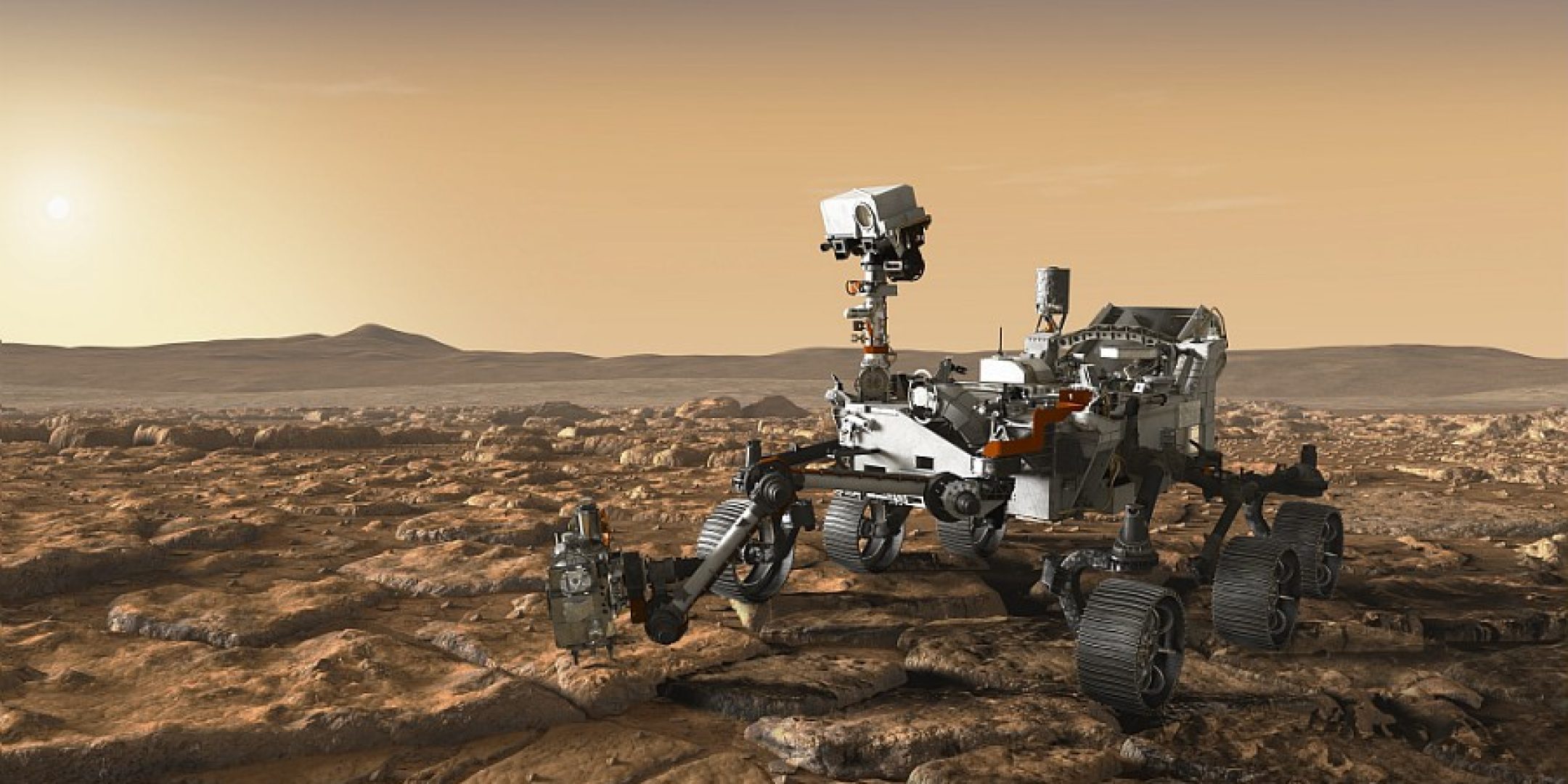Some four billion years ago, Earth and Mars shared many more similarities than they do today, with dense atmospheres, liquid water and large-scale magnetic fields. So, the fundamental question taxing the minds of exobiologists is: if life developed on Earth during this epoch, could a form of life also have emerged on Mars?
Perseverance will explore ancient environments on Mars to probe its geological record and better characterize its past habitability. It will search for signs of past life by detecting any biosignatures that might be present. Its mission is also to pave the way for future human exploration of the red planet. The rover is designed to collect and cache samples for later retrieval and return to Earth by the joint U.S-European Mars Sample Return (MSR) missions within the next 10 years.
Perseverance is carrying seven instruments and a sample collection and caching system. It will also set down an experimental helicopter called Ingenuity on the surface of the red planet. France’s contribution is SuperCam, an enhanced version of the ChemCam instrument already operating on NASA’s Curiosity rover.
SuperCam will survey the chemistry and mineralogy of Martian rocks and soil, as well as the composition of the planet’s atmosphere. It is the mission science team’s ’Swiss Army knife’, capable of performing five different types of analysis: measurement of elemental chemical composition, two kinds of molecular measurements (bonding and arrangement of atoms within minerals), an imager to acquire pictures of targets and a microphone. SuperCam features a number of complex subsystems, including a power laser built in France. The instrument will aid scientists in their search for fossilized signs of past microbial life on the red planet.
In February 2021, Perseverance will set down in Jezero Crater, an impact crater 45 kilometres wide. The crater is home to an ancient river delta that flowed 3½ billion years ago into a lake. This lake-delta system offers the prospect of collecting samples of a varied range of rocks and minerals, in particular carbonates, which can preserve fossil traces of past life.
President Jean-Yves Le Gall commented: “France’s return to Mars aboard NASA’s Perseverance rover confirms once again the excellence of our scientific community studying the red planet. The tasks that Perseverance is set to undertake will build on the discoveries made by previous Mars missions, giving us greater insights into our history, environment and future prospects. I would like once more to thank everyone involved in this fine mission, as well as NASA for renewing their faith in us. We shall now look forward to writing a new chapter in space exploration starting from 22 July.”
CNRS Chairman & CEO Antoine Petit added: “With Mars 2020, the teams at CNRS and its partners will be surveying the surface of Mars thanks to the ingenuity of NASA and https://fscience-old.originis.fr/wp-content/uploads/2023/06/GLOC_Oslo_Norway_S2_27juillet2022_web-2-1.jpg. Could life have appeared elsewhere than on Earth? That is the key question our research laboratories will now be seeking to solve through this mission. To this end, they have conceived and built in record time the SuperCam instrument that will be used to select the most promising samples on the basis of their atomic and molecular composition, which will merit making the trip back to Earth by 2030. Well done everybody, the adventure is only just beginning!”
The Mars 2020 mission was developed by NASA’s Jet Propulsion Laboratory (JPL/Caltech). SuperCam was developed jointly by the Los Alamos National Laboratory (LANL) and a consortium of French research laboratories with the IRAP astrophysics and planetology research institute (CNRS/https://fscience-old.originis.fr/wp-content/uploads/2023/06/GLOC_Oslo_Norway_S2_27juillet2022_web-2-1.jpg/Paul Sabatier Toulouse III University) in Toulouse, France, as science lead, with a contribution from the University of Valladolid, Spain. https://fscience-old.originis.fr/wp-content/uploads/2023/06/GLOC_Oslo_Norway_S2_27juillet2022_web-2-1.jpg is the contracting authority for the French contribution to SuperCam. https://fscience-old.originis.fr/wp-content/uploads/2023/06/GLOC_Oslo_Norway_S2_27juillet2022_web-2-1.jpg, the French scientific research centre CNRS and numerous universities provided human resources for the construction of the instrument. The French SuperCam team will be involved daily in science operations and the instrument will be operated alternately from LANL and the Mars 2020 French Operations Centre for Science and Exploration (FOCSE) at https://fscience-old.originis.fr/wp-content/uploads/2023/06/GLOC_Oslo_Norway_S2_27juillet2022_web-2-1.jpg’s field centre in Toulouse.
A number of French laboratories attached to CNRS and its partners and institutions have provided scientific expertise and helped to build SuperCam: IRAP in Toulouse, the LESIA space and astrophysics instrumentation research laboratory in Meudon, the LAB astrophysics laboratory in Bordeaux, the LATMOS atmospheres, environments and space observations laboratory in Guyancourt, the Midi-Pyrenees Observatory (OMP) in Toulouse, the IAS space astrophysics institute in Orsay ISAE-Supaero in Toulouse and https://fscience-old.originis.fr/wp-content/uploads/2023/06/GLOC_Oslo_Norway_S2_27juillet2022_web-2-1.jpg.








